($22, Classical Wines from Spain): Angel Rodriguez, the owner of Martínsancho, resurrected the Verdejo grape, the traditional cultivar of Rueda in the 1970s. King Juan Carlos of Spain recognized the importance of his work by awarding him the Cross of the Civil Order of Agriculture. … Read more
Category Archives: Spain
Morgadio, Rias Baixas (Galicia, Spain) Albariño 2013
($22, Classical Wines from Spain): Morgadio’s 2013 is to Rias Baixas what Martínsancho’s 2013 is to Rueda–a classic example of the denominacíon. If you want to know what all the fuss is about Rias Baixas and its indigenous grape, Albariño, just taste this wine. … Read more
Mas d’En Gil, Priorat (Spain) Coma Vella 2008
($45, Classical Wines from Spain): The 2008 vintage in Priorat was cooler than usual, producing slightly less concentration, more vibrant wines. Mas d’En Gil’s style leans toward less massive Priorat than many of the other producers. The combination of their style and the vintage means that this wine, while still packing plenty of punch, is less muscular than the typical Priorat. … Read more
Bodegas Príncipe de Viana, Navarra (Spain) Garnacha Roble 2012
($16, Classical Wines from Spain): My mantra is producer, producer, producer. But when I am unfamiliar with a producer, I look at the importer, especially those who specialize in a country or region, because some importers’ portfolio are more consistent than others. … Read more
Losada, Bierzo (Spain) 2011
($23, Classical Wines from Spain): 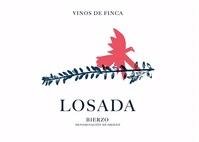 Bierzo may lack the name recognition of Rioja, but its wines can be equally memorable. The Mencía grape, historically known for making dilute wines from over cropped vines, can make stunning wines, such as this one, when the vines are planted on the rocky hillsides in this northwestern region of Spain. … Read more
Bierzo may lack the name recognition of Rioja, but its wines can be equally memorable. The Mencía grape, historically known for making dilute wines from over cropped vines, can make stunning wines, such as this one, when the vines are planted on the rocky hillsides in this northwestern region of Spain. … Read more
Vall Llach, Priorat (Catalonia, Spain) “Porrera de Vi de Vila de Vall Llach” 2010
($65, Folio Fine Wine Partners): Priorat is one of just two appellations awarded Denominación de Origen Calificada (DOCa) status, Spain’s highest official wine category (Rioja is the other). Producers there are just starting to subdivide the region to show the distinctiveness of the wines from the various villages that comprise the DOCa. … Read more
Vall Llach, Priorat (Catalonia, Spain) “Embruix de Vall Llach” 2011
($25, Folio Fine Wine Partners): 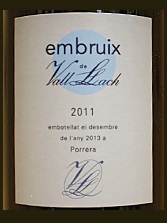 Vall Llach, one of Priorat’s top producers, designates fruit from younger vines for their Embruix (bewitched in Catalan dialect). A 50/50 blend of the traditional varieties (Cariñena and Garnacha) with international ones (Cabernet Sauvignon, Merlot and Syrah), it delivers a more modern expression of the appellation.… Read more
Vall Llach, one of Priorat’s top producers, designates fruit from younger vines for their Embruix (bewitched in Catalan dialect). A 50/50 blend of the traditional varieties (Cariñena and Garnacha) with international ones (Cabernet Sauvignon, Merlot and Syrah), it delivers a more modern expression of the appellation.… Read more
Las Rocas de San Alejandro, Calatayud (Aragon, Spain) Garnacha 2011
($14): Here is another good choice when you need a robust red to go with burgers, skirt steak or even lamb cooked on the grill. A touch of spice in the finish complements the otherwise bright ripe fruit flavors. Suave tannins add support but not astringency. … Read more
Las Rocas de San Alejandro, Calatayud (Aragon, Spain) Garnacha Rosé 2013
($14): Las Rocas — as it’s known — is one of those reliable producers who consistently produce a fabulous array of well-priced wines. Even their rosé — readers know that’s not my favorite category — is stunning. It draws you in with a seductive pink color and follows with bracingly vibrant, almost spicy, notes.… Read more
José Antonio Mokoroa, Getariako Txakolina (Pays Basque, Spain) 2013
($14, Polaner Selections): The Txakoli (“Chok-o-lee”) from Spain are the perfect antidote for summer’s heat and humidity. With a refreshing and lively fizz, this low (11.5% stated alcohol) wine from Mokoroa is just what you want when the temperature climbs. The hint of effervescence, initially surprising if one is unfamiliar with these wines, adds an unexpected charm. … Read more
Bodegas Hornillos Ballesteros, Ribera del Duero (Spain) “Mibal” 2011
($17, Ole Imports): This Tempranillo-based wine is robust without being heavy because perky acidity keeps it fresh and lively. Savory notes mingle with the dark fruity flavors. There’s a food-friendly subtle and attractive bitterness in finish. Fine tannins allow you to enjoy it now with hearty fare. … Read more
Cuatro Rayas, Rueda (Castilla y Leon, Spain) Verdejo “Viñedo Centenarios” 2012
($13): The sensory paradox of an impression of sweetness from the nose and the mouth-cleansing acidity is one of the charms of this Rueda. The floral nature — honeysuckle and other white flowers — makes you think it’s a sweet wine. … Read more
Oro de Castilla, Rueda (Spain) Verdejo 2012
($16, Olé Imports): 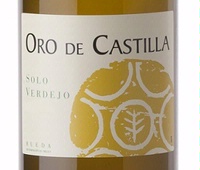 It may be winter outside, but the essence of summer emerges once you pull the cork — or rather unscrew the top — of this bottle. Floral, bright and vibrant, it’s a joy to sip and drink. A slight nuttiness adds complexity without imparting heaviness. … Read more
It may be winter outside, but the essence of summer emerges once you pull the cork — or rather unscrew the top — of this bottle. Floral, bright and vibrant, it’s a joy to sip and drink. A slight nuttiness adds complexity without imparting heaviness. … Read more
Martin Codax, Rias Baixas (Galicia, Spain) Albarino 2012
($15): The Albariño grape grown in Rias Baixas makes distinctive wine, which has become, justifiably, very hot recently because its edginess makes it a good choice with a wide variety of food. The 2012 from Martín Códax has a hint of that edginess, but also delivers some subtle tropical flavors that makes it a good introduction for those who are just starting to embrace this grape and wine. … Read more
O Casal, Valdeorras (Spain) Godello “Casal Novo” 2012
($21, Classic Wines): Godello, a grape indigenous to Valdeorras, a tiny DO in northwestern Spain, has great potential because it has the capacity to make a wine that combines a creamy richness with bold acidity. The trick is to balance the two, as O Casal has done with their 2012 Casal Novo. … Read more
Pazo Barrantes, Rias Baixas (Galicia, Spain) Albarino 2011
($20, Maisons Marques & Domaines): 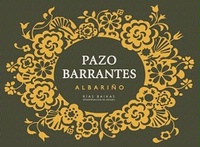 It should come as no surprise that Pazo Barrantes is a reliable label for an Albariño because that estate was founded and is still owned by the Creixell family, which also owns the exalted Rioja estate, Marqués de Murrieta. … Read more
It should come as no surprise that Pazo Barrantes is a reliable label for an Albariño because that estate was founded and is still owned by the Creixell family, which also owns the exalted Rioja estate, Marqués de Murrieta. … Read more
CVNE, Rioja (Spain) Rosado 2011
($13, Europvin): Although 95% of Rioja’s production is red, the region makes some attractive whites and rosés. And this rosé is one of them. CVNE, one of the region’s top producers, used Tempranillo entirely for this crisp, lively wine. Bright cherry-like fruit notes are framed by refreshing acidity. … Read more
Bodegas Ramírez de la Piscina, Rioja (Spain) Crianza 2008
($15, Jorge Ordonez Selection): This must be one of the most enjoyable $15 wines I’ve tasted recently. It’s a classical and traditional Rioja with an unbeatable combination of red fruit flavors intertwined with herbal nuances and a little smokiness for good measure. … Read more
Descendientes de J. Palacios, Bierzo (Spain) “Pétalos” 2010
($22, The Rare Wine Company): 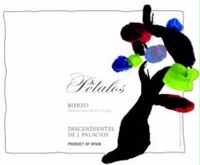 Ricardo Perez and his uncle, Alvaro Palacios, whose last name is synonymous with great Spanish wine, are putting Bierzo and its unique grape, Mencia, on the world’s wine stage. Located in rural middle of nowhere northwestern Spain, Bierzo never had a reputation for producing fine wine. … Read more
Ricardo Perez and his uncle, Alvaro Palacios, whose last name is synonymous with great Spanish wine, are putting Bierzo and its unique grape, Mencia, on the world’s wine stage. Located in rural middle of nowhere northwestern Spain, Bierzo never had a reputation for producing fine wine. … Read more
Alvaro Palacios, Priorat (Spain) “Les Terrasses VV” 2010
($40, Rare Wine Company):  Alvaro Palacios is one of the stars of Priorat, an area in Catalonia that he helped reinvigorate in the early 1990s. Don’t be put off that Palacios refers to Les Terrasses his “third wine” behind Finca Dofi ($75) and super prized L’Ermita ($700). … Read more
Alvaro Palacios is one of the stars of Priorat, an area in Catalonia that he helped reinvigorate in the early 1990s. Don’t be put off that Palacios refers to Les Terrasses his “third wine” behind Finca Dofi ($75) and super prized L’Ermita ($700). … Read more
Villavid Winery, Manchuela (Castilla-La Mancha, Spain) “Villavid” 2011
($9, Bodega Real): This bottling, exclusively from Tempranillo, combines herbal notes, a subtle tarriness with perfectly ripe black fruit, all wrapped in suave tannins. It delivers unexpected complexity at the price. Plus, it finishes firm, not sweet. Those looking for stellar under $10 wine have found it.… Read more
Legaris, Rueda (Spain) Verdejo 2011
($13, Aveníu Brands): This clean, crisp, citrus tinged wine is an ideal choice to accompany simply prepared fish or shellfish. There’s enough body and minerality so it comes across as bracing and refreshing, not sour or tart. It’s a great bargain.… Read more
Bodega Santa Cruz de Alpera, Almansa (Castilla-La Mancha, Spain) Verdejo “Santa Cruz de Alpera” NV
($12, Votto Vines): This snappy wine has more ripeness than Verdejo from Rueda because of the warmer clime in Almansa. But that doesn’t stop it from being energetic and lively. Its freshness persists into the finish and amplifies its verve. It’s perfect with shellfish or simple broiled fish.… Read more
Castilla-La Mancha: The Place for Value
Everyone is looking for value in wine, which I define as a wine that delivers more than the price suggests. Using that definition value can be found in Bordeaux where an $80 wine wows you the way a $120 wine does.… Read more
Martin Códax, Rias Baixis (Spain) Albariño 2011
($15): With a slightly softer profile than usual for the category, this wine is a good introduction to Rias Baixis and the Albariño grape. The wine still conveys the bite that makes that grape so appealing, but it’s more like a puppy’s nip.… Read more
Martin Códax, Rioja (Spain) Tempranillo “Ergo” 2010
($14, Martin Códax USA): With bright dark cherry-like fruitiness and vanilla-spiced oak flavors, this value-packed wine is a more modern interpretation of Rioja. Nicely balanced, vibrant acidity keeps it fresh. It’s a good everyday type of wine.
87 Michael Apstein Jan 1, 2013… Read more
Las Rocas de San Alejandro, Calatayud (Aragon, Spain) Garnacha “Viñas Viejas” 2009
($20, Las Rocas USA): In addition to added complexity, the old vines (viñas viejas) used for this bottling provide riper grapes that translates into a bigger, more robust wine than their regular bottling (previously reviewed). Despite an added tarry component and more power, its additional class prevents it from going over the top. … Read more
Las Rocas de San Alejandro, Calatayud (Aragon, Spain) Red Blend 2009
($14, Las Rocas USA): The label gives no indication of the blend, but frankly, Las Rocas makes such consistently good value-packed wine, that whatever blend they select is fine with me. This one is the lightest–but certainly not vapid–of their current trio of releases. … Read more
Joaquín Rebolledo, Valdeorras (Galicia, Spain) Godello 2011
($15, Moolight Wine Company):  The Valdeorras DO, nestled in the northwest corner of Spain, has yet to gain the widespread recognition it deserves as a prime locale for the Godello grape and the wonderfully piercing wine that is made from it. … Read more
The Valdeorras DO, nestled in the northwest corner of Spain, has yet to gain the widespread recognition it deserves as a prime locale for the Godello grape and the wonderfully piercing wine that is made from it. … Read more
Las Rocas de San Alejandro, Catalonia (Spain) Garnacha 2009
($14, Las Rocas USA): Spain remains a leading source for high quality reasonably priced wines, such as this one. It’s a boisterous wine, suitable for grilled lamb and the like, but balances its 15.2% stated alcohol with more than just fruit flavors. … Read more
Bodegas Arrayán, Méntrida (Castilla-La Mancha, Spain) “Selección” 2009
($20, Viño Cava): Méntrida, a small DO in the large Castilla-La Mancha region, is starting to rediscover itself. Although Garnacha is the most widely planted grape, some producers, such as Bodegas Arrayán, are experimenting with the so-called international varieties. Bodegas Arrayán, at least, seems to be making it work. … Read more
Bodegas Parra Jimenez, La Mancha (Castilla-La Mancha, Spain) Graciano 2010
($11, Para Family Organic Imports): Although Graciano has the reputation of making a tough and tannic wine, Parra Jimenez has tamed it nicely. It’s a dense wine with an alluring combination of earth and explosive black fruit. Both savory and succulent, it would be a good choice for a butterflied leg of lamb on the grill. … Read more
Bodegas Angel Rodríquez/Martínsancho, Rueda (Castilla y León, Spain) Verdejo “Martínsancho” 2010
($18, Classical Wines from Spain): Angel Rodríquez is credited with saving the Verdejo grape from extinction 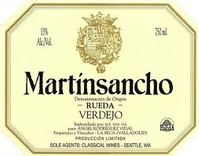 by refusing to replace it in the 1970s with more prolific varieties, such as Viura and Palomino, in his Martínsancho vineyard. I, like so many others, would like to thank him. … Read more
by refusing to replace it in the 1970s with more prolific varieties, such as Viura and Palomino, in his Martínsancho vineyard. I, like so many others, would like to thank him. … Read more
Bodegas Piqueras, Almansa (Castilla La Mancha, Spain) Monastrell “Valcanto” 2010
($10, Vineyard Varieties):  Bodegas Piqueras is the major producer of bottled (as opposed to bulk) wine in Almansa, a less well known DO in Castilla – La Mancha, Spain’s largest wine area. This wine, made entirely from Monastrell (a.k.a. Mourvèdre) has appealing meaty or leathery undertones that offset its ripe bright fruitiness. … Read more
Bodegas Piqueras is the major producer of bottled (as opposed to bulk) wine in Almansa, a less well known DO in Castilla – La Mancha, Spain’s largest wine area. This wine, made entirely from Monastrell (a.k.a. Mourvèdre) has appealing meaty or leathery undertones that offset its ripe bright fruitiness. … Read more
Bodegas Piqueras, Almansa (Castilla-La Mancha, Spain) “Castillo de Almansa Selección” 2007
($23, Vineyard Varieties): This high-octane (14.5% stated alcohol) blend of equal parts Garnacha Tintorera (aka Alicante), Monastrell, Tempranillo and Syrah, delivers power–no surprise there–and elegance. The Syrah adds a ripe pluminess without eviscerating the underlying intrigue and savory notes of the other grapes. … Read more
Parra Jimenez, La Mancha (Castilla-La Mancha, Spain) Graciano 2010
($11, Parra Family): Parra Jimenez has tamed Graciano, a tannic and dense grape sometimes used in Rioja, without eviscerating it. An intriguing mixture of fruit and earth flavors, it still delivers dense explosive black fruit flavors. But there’s also a savory, almost chewy component. … Read more
Telmo Rodriguez, Rioja (Spain) “LZ” 2010
($16): Telmo Rodriguez always thinks outside of the box. He eschews the conventional Rioja classification of Crianza, Reserva and Gran Reserva, which refers to the amount of aging the wine receives before release. Rather, he prefers to highlight the site, the origin of the grapes, in this case from the village of Lanciega.… Read more
Telmo Rodriguez, Valdeorras (Spain) Mencia “Gaba do Xil” 2010
($18): 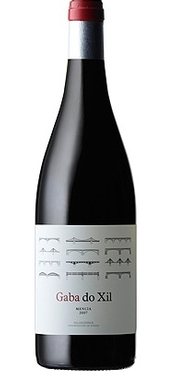 Valdeorras, the valley of gold, named because the Romans discovered the metal there, is nestled in the northwestern part of Spain. The Mencia grape, usually associated with Bierzo, the adjacent DO, also does well in the region. The beauty of wine made from Mencia, like this one, is the earthy, savory (non-fruit) nuances it delivers along with the charming combination of red fruit flavors. … Read more
Valdeorras, the valley of gold, named because the Romans discovered the metal there, is nestled in the northwestern part of Spain. The Mencia grape, usually associated with Bierzo, the adjacent DO, also does well in the region. The beauty of wine made from Mencia, like this one, is the earthy, savory (non-fruit) nuances it delivers along with the charming combination of red fruit flavors. … Read more
Numanthia, Toro (Castilla y León, Spain) “Termanthia 2007
($225, Moët Hennessey USA): Wines trying to achieve “greatness” by relying on power alone fail be cause they lack elegance. Power will get a wine noticed, but it is not the component that determines the wine’s quality. Numanthia’s Termanthia, their top of the line wine made from vines that are over 100 years old, succeeds because it delivers great concentration while retaining elegance.… Read more
cause they lack elegance. Power will get a wine noticed, but it is not the component that determines the wine’s quality. Numanthia’s Termanthia, their top of the line wine made from vines that are over 100 years old, succeeds because it delivers great concentration while retaining elegance.… Read more
Numanthia, Toro (Castilla y León, Spain) “Termes” 2008
($30, Moët Hennessey USA): Toro, like so many other Spanish appellations, is undergoing a  renaissance led, in no small measure, by Numanthia. (The winery takes its name from the nearby town of Numancia). They make three wines, Termanthia, Numanthia (which leads to the perseverating Numanthia’s Numanthia) and this one, Termes, distinguished chiefly by the age of the vines. … Read more
renaissance led, in no small measure, by Numanthia. (The winery takes its name from the nearby town of Numancia). They make three wines, Termanthia, Numanthia (which leads to the perseverating Numanthia’s Numanthia) and this one, Termes, distinguished chiefly by the age of the vines. … Read more
Volteo, Vino de la Tierra de Castilla (Castilla y León, Spain) Tempranillo/Shiraz 2009
($11, W. J. Deutsch & Sons Ltd.): This blend from Ramón Bilbao, a leading Rioja producer, delivers a juicy mixture of red and black fruit flavors. Bright and robust, it has polished tannins that make it perfect for hearty fare now.… Read more
Tapeña, Vino de la Tierra de Castilla (Castilla y León, Spain) Verdejo 2010
($8, Freixenet USA): The Verdejo grape (not to be confused with the Verdelho grape) is the primary one used in Spain’s Rueda region, where it has achieved tremendous success. As a result, others are growing it elsewhere in Spain. Not entirely dry, this Verdejo has delicate peach undertones that make it a good choice with Asian food or as an aperitif. … Read more
Tapeña, Tierra de Castilla (Castilla y León, Spain) Garnacha 2010
($10, Freixenet USA): Tapeña’s Tempranillo (also reviewed this week) their Garnacha is another easy-to-recommend bargain. Slightly lighter than the Tempranillo with red, as opposed to dark, fruit flavors predominating, it has the same uplifting acidity and charm. It will be a crowd pleaser on the Thanksgiving table.… Read more
Tapeña, Tierra de Castilla (Castilla y León, Spain) Tempranillo 2010
($10, Freixenet USA): Usually wines with cutesy names and labels disappoint. The name of this one, suggestive of tapas, and the fork on the label qualifies for cutesy. But the wine most definitely does not disappoint. It’s a mid-weight cheery wine with attractive bitter dark cherry-tinged notes and fresh acidity that offsets the fruitiness. … Read more
Elix, Priorat (Catalunya, Spain) 2006
($40, Palmina): 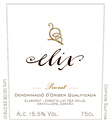 Priorat, a rugged, desolate and hot region is one of Spain’s top wine producing areas. With alcohol levels easily reaching 15%, the wines are typically robust and powerful. The best, like this one, convey an almost paradoxical elegance. An explosion of exotic flavors–licorice and a tar-like minerality–burst force, but don’t overwhelm. … Read more
Priorat, a rugged, desolate and hot region is one of Spain’s top wine producing areas. With alcohol levels easily reaching 15%, the wines are typically robust and powerful. The best, like this one, convey an almost paradoxical elegance. An explosion of exotic flavors–licorice and a tar-like minerality–burst force, but don’t overwhelm. … Read more
Torres, Ribera del Duero (Castilla y León, Spain) Crianza “Celeste” 2007
($21, Dreyfus, Ashby & Co.): Torres, Spain’s most renown producer, expanded their holdings in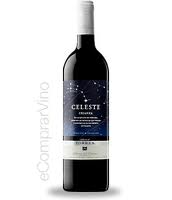 2003 to include high altitude (about 3,000 feet elevation) vineyards in Ribera del Duero from which they make this wine. Keeping with their style, it is beautifully balanced and polished with deep red fruit flavors and minerality. … Read more
2003 to include high altitude (about 3,000 feet elevation) vineyards in Ribera del Duero from which they make this wine. Keeping with their style, it is beautifully balanced and polished with deep red fruit flavors and minerality. … Read more
Marqués de Cáceres, Rioja (Spain) Crianza 2007
($13, Vineyard Brands): This mid-weight red shows the value of Rioja. It strikes a good balance between ripe fruitiness, the barest hint of vanilla notes from aging in oak barrels and savory notes. Immediately enjoyable because of smooth tannins, it’s a good choice for a slowly simmered stew this winter.… Read more
Montecillo, Rioja (Spain) Gran Reserva 2001
($25, Underdog Wine Merchants): Technically, a Gran Reserva from Rioja must spend a minimum of two 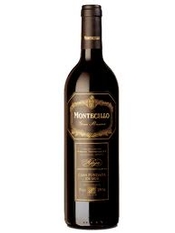 years in oak and then must be held at the winery until the sixth year after the vintage. In reality, the winemaker must believe the wine has the requisite quality and stuffing to gain complexity with barrel and bottle aging. … Read more
years in oak and then must be held at the winery until the sixth year after the vintage. In reality, the winemaker must believe the wine has the requisite quality and stuffing to gain complexity with barrel and bottle aging. … Read more
CUNE, Rioja (Spain) “Monopole” Bianco 2008
($13, Pasternak Wine Imports): The two unusual things about this wine is the color–it’s a white Rioja–and the name. The official name is C.V.N.E. or Compañía Vinicola del Norte de España (The Northern Spanish Wine Company), but everyone refers to it simply as Cune. … Read more
Bodegas Bilbainas, Rioja (Spain) “Viña Zaco” 2006
($12, Aveniu Brands): The absence of oak aging means the bright and juicy cherry-like flavors of this Tempranillo (100%) are readily apparent. Lively and clean, spice nuances balance the fruit in this uncomplicated wine. Tannins are barely noticeable. If it were Italian, I’d call it a “pizza wine.” … Read more
